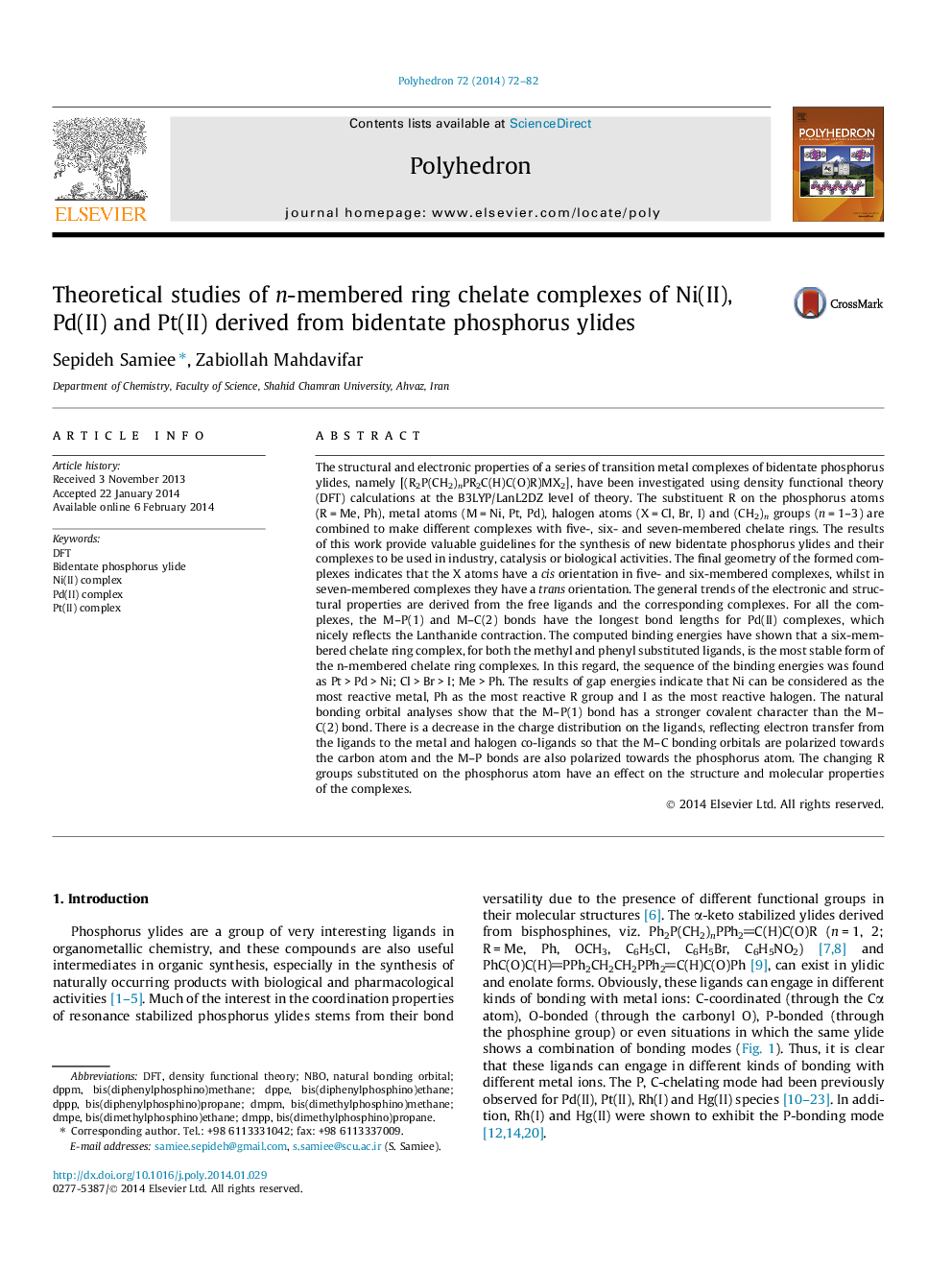| کد مقاله | کد نشریه | سال انتشار | مقاله انگلیسی | نسخه تمام متن |
|---|---|---|---|---|
| 1335404 | 1500267 | 2014 | 11 صفحه PDF | دانلود رایگان |

The structural and electronic properties of a series of transition metal complexes of bidentate phosphorus ylides, namely [(R2P(CH2)nPR2C(H)C(O)R)MX2], have been investigated using density functional theory (DFT) calculations at the B3LYP/LanL2DZ level of theory. The substituent R on the phosphorus atoms (R = Me, Ph), metal atoms (M = Ni, Pt, Pd), halogen atoms (X = Cl, Br, I) and (CH2)n groups (n = 1–3) are combined to make different complexes with five-, six- and seven-membered chelate rings. The results of this work provide valuable guidelines for the synthesis of new bidentate phosphorus ylides and their complexes to be used in industry, catalysis or biological activities. The final geometry of the formed complexes indicates that the X atoms have a cis orientation in five- and six-membered complexes, whilst in seven-membered complexes they have a trans orientation. The general trends of the electronic and structural properties are derived from the free ligands and the corresponding complexes. For all the complexes, the M–P(1) and M–C(2) bonds have the longest bond lengths for Pd(II) complexes, which nicely reflects the Lanthanide contraction. The computed binding energies have shown that a six-membered chelate ring complex, for both the methyl and phenyl substituted ligands, is the most stable form of the n-membered chelate ring complexes. In this regard, the sequence of the binding energies was found as Pt > Pd > Ni; Cl > Br > I; Me > Ph. The results of gap energies indicate that Ni can be considered as the most reactive metal, Ph as the most reactive R group and I as the most reactive halogen. The natural bonding orbital analyses show that the M–P(1) bond has a stronger covalent character than the M–C(2) bond. There is a decrease in the charge distribution on the ligands, reflecting electron transfer from the ligands to the metal and halogen co-ligands so that the M–C bonding orbitals are polarized towards the carbon atom and the M–P bonds are also polarized towards the phosphorus atom. The changing R groups substituted on the phosphorus atom have an effect on the structure and molecular properties of the complexes.
The structural and electronic properties of a series of transition metal complexes of bidentate phosphorus ylides, namely [(R2P(CH2)nPR2C(H)C(O)R)MX2] (R = Me, Ph; M = Ni, Pt, Pd; X = Cl, Br, I; n = 1, 2, 3), have been investigated using DFT calculations at the B3LYP/LanL2DZ level of theory. General trends of electronic and structural properties are derived for the free ligands and their corresponding complexes. The changing R groups substituted on the phosphorus atom have an effect on the structure and molecular properties of the complexes.Figure optionsDownload as PowerPoint slide
Journal: Polyhedron - Volume 72, 18 April 2014, Pages 72–82